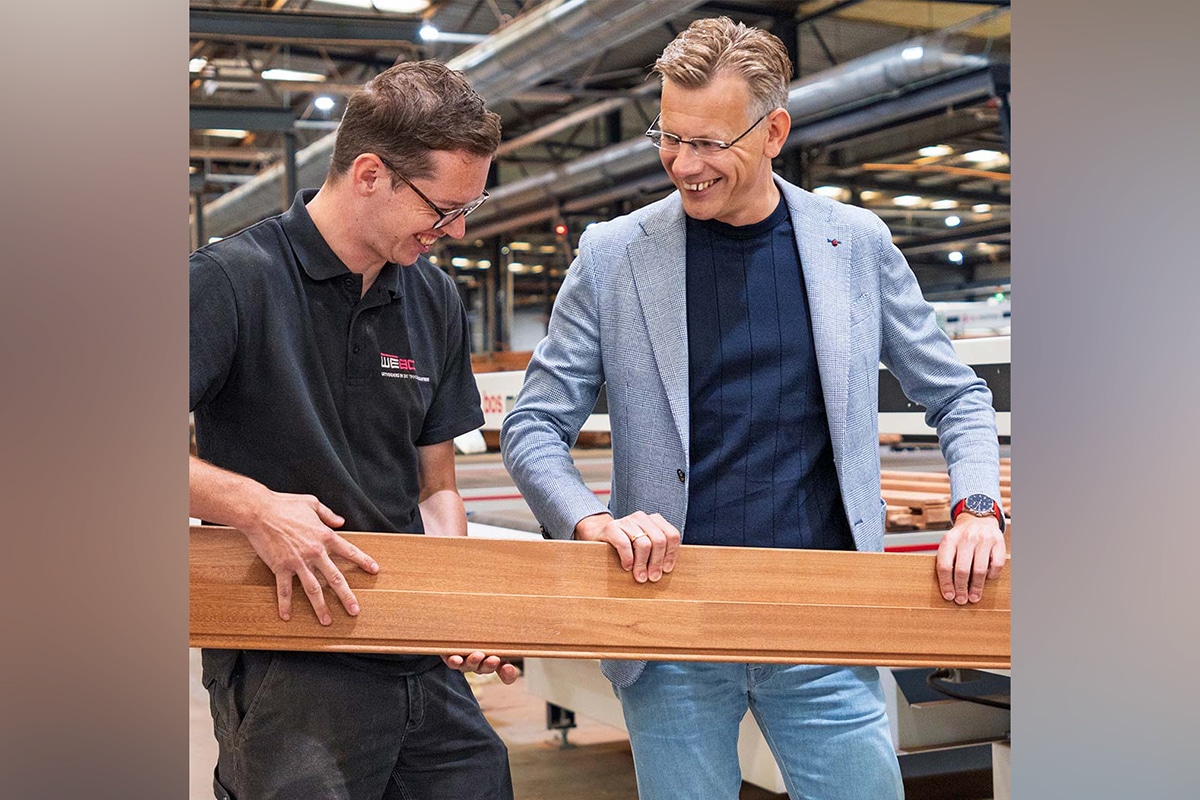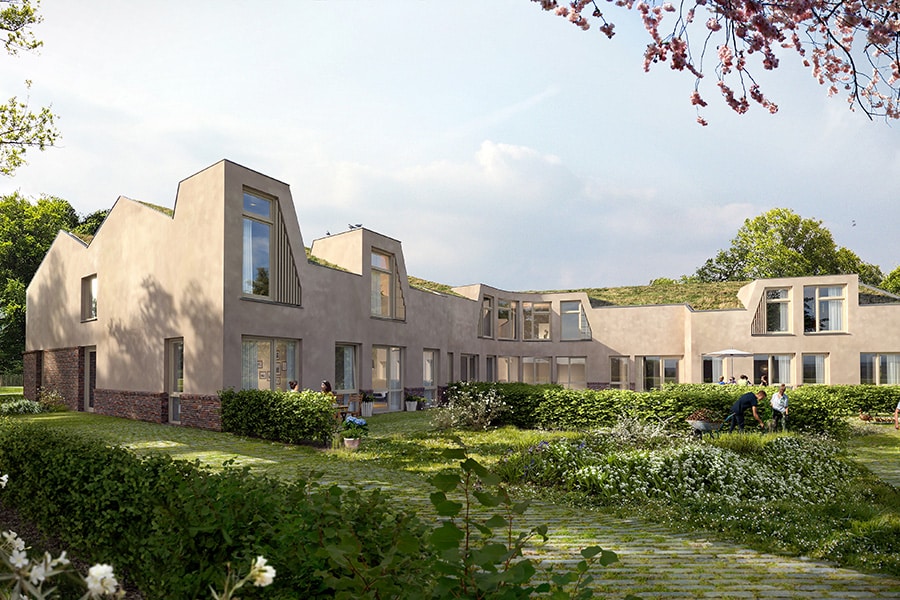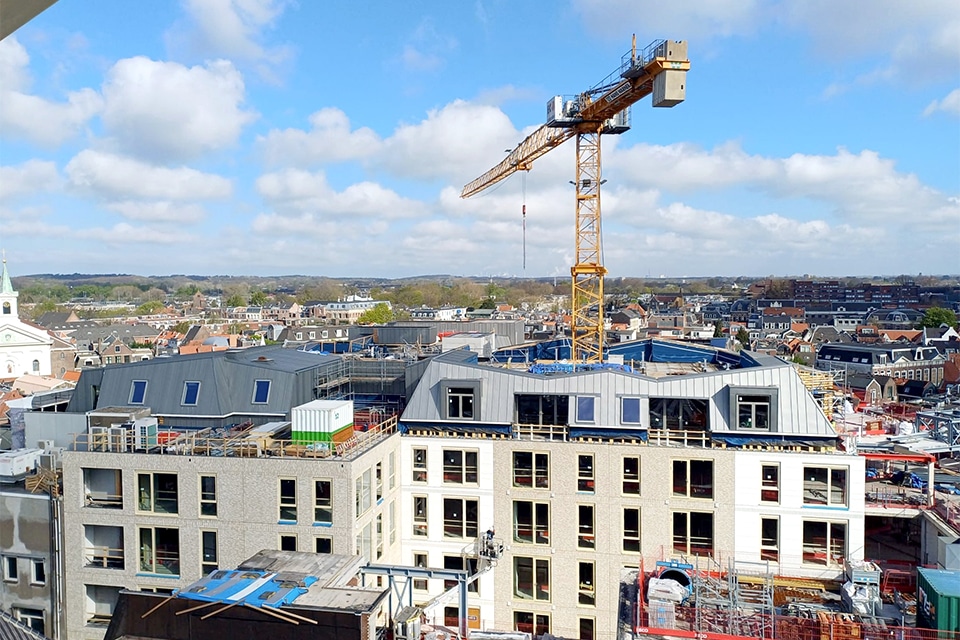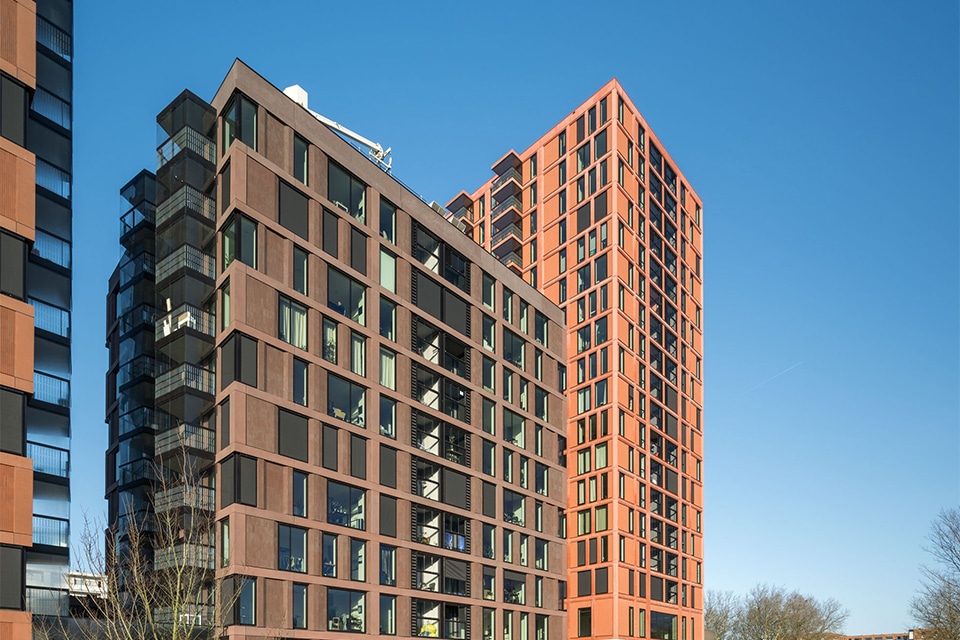
Gate building ENKA in Ede: restoration and repurposing of an icon
For years, the former gatehouse of ENKA in Ede was out of use. A crying shame, according to BOEi, a non-profit organization dedicated to the restoration of vacant buildings. It engaged Bouwbedrijf Kreeft to breathe new life into the Poortgebouw as a short-stay apartment complex. Project leader Richard Koevoet offers a look at the restoration and repurposing process.

"The challenge was to fit the apartments into the existing shell as efficiently as possible," Koevoet says. "But also to return the look of the building as much as possible to how it once was. For example, we reconstructed the original ENKA logo on the front of the building and brought back the distinctive red wooden window frames. We also restored the lanterns on the front facade and completely reconstructed the flagpoles."
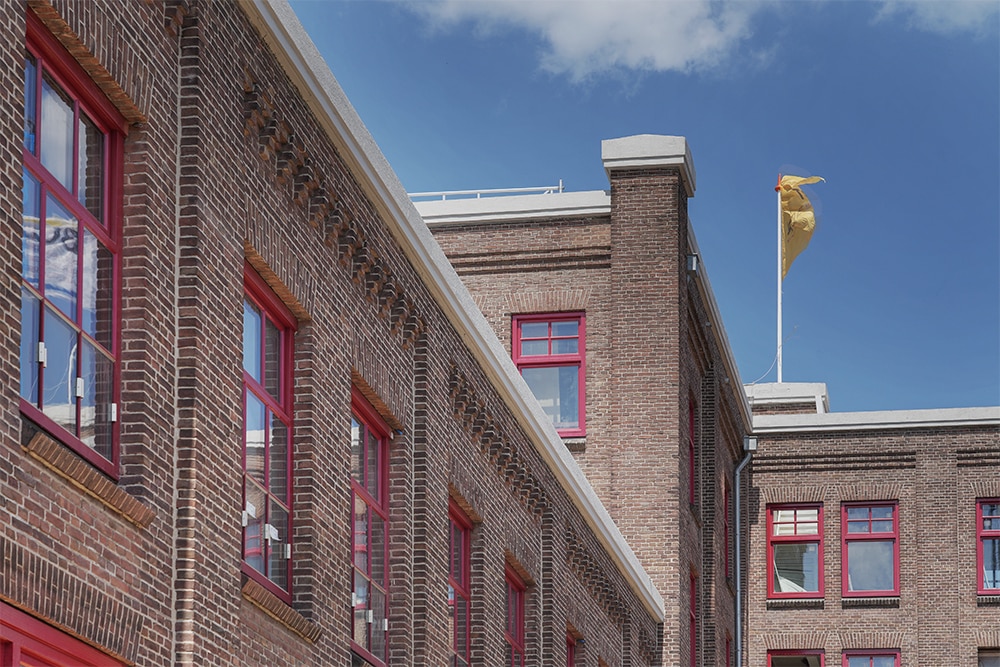
Old and new
Still, sometimes it was necessary to take a new direction. "There was a middle area under the shed roofs with little usable daylight. The question was how we were going to turn that into a useful living space. We ended up incorporating into the design something you wouldn't expect to see in a monument: making a hole in the roof for a roof terrace. The State Department and the Monument Committee unanimously thought it was a good plan with a lot of added value. We did a very good job with that."
Mainly in the public areas, however, such as the halls and stairwell, the original style was carried through as much as possible, Koevoet says. "A special element is the central hall, which has monumental value. This space has a full marble floor and wall covering. We are going to restore those. Inside the building, too, we want to preserve the cultural-historical value."

More than sustainable
"Together with BOEi, we as Bouwbedrijf Kreeft have the objective of being progressive in sustainability and circularity. For each component, we looked at how we could approach it in the most circular way possible," said Koevoet. "The biggest issue was also immediately the easiest: the existing shell that remains. We also placed Leadax Roov roofing on the flat roofs. That is made from PVB film, a waste stream from laminated glass. You can reuse that product one-to-one in the future as a raw material for the same product. The green roof is built with circular substrate and we didn't make the walkways on the roof from concrete, but from peach seeds, a waste product from the industry. In the demolition, we looked at which valuable materials were still usable. For example, the many plastic window frames were repurposed elsewhere."
"We also installed blank pre-walls and filled them with wool from Knauf. This does not use glue, so the material remains reusable. Sustainability was also paramount in the heat supply, which is why we are not connected to the gas pipeline, but to Ede's heat network. That in turn is heated with pruning waste from the municipality of Ede. Thus the circle is nicely completed."
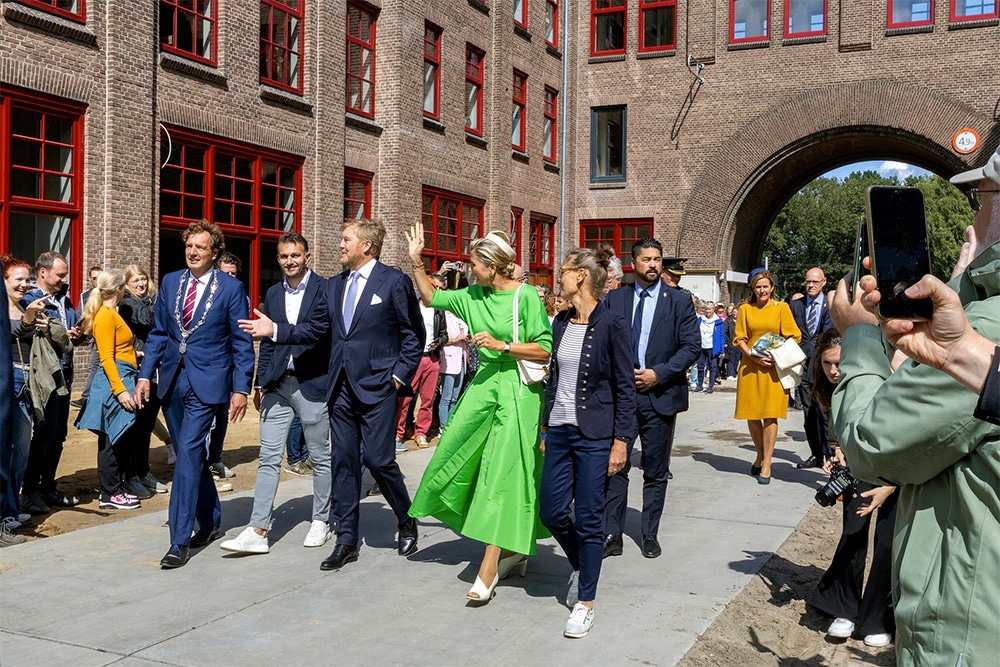
Iconic place
"It was important to restore the character of the building," Koevoet says. "A number of important buildings on the ENKA site have monumental status, but this building is particularly recognizable. For many people in Ede who still worked there, it is important that it is preserved and given a new function. In this way, the project contributes to the environment and the cultural-historical value of the entire area."
